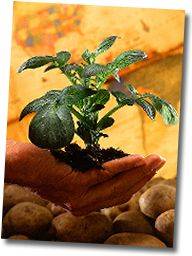Water composes from 75 to 85% of the weight of a healthy grass
plant. It is essential for seed germination, tissue formation, plant cooling,
food manufacture, nutrient absorption and transport. Water loss from a grass
plant is greatest under conditions of high light intensity, high temperature,
low relative humidity, and windy conditions. Without adequate water, the grass
plant can't cool itself and becomes susceptible to wilting, desiccation and
death.
Return to Table of Contents
Yes, grasses differ in both their need for water and their
drought tolerance. Seedling or recently established lawns (less than 12 months
old) have little drought tolerance. Some mature grasses develop deep roots and
require less water. Not all of the following grasses are suited to all areas in
Virginia. Consult your local Extension Agent for specific information for your
area.
Tall fescue when properly managed
develops a deep root system and can be very drought tolerant. However, this
advantage is lost if grown on shallow or extremely compacted soils.
Kentucky bluegrass can survive
extended drought periods by gradually slowing growth, turning straw colored and
entering summer dormancy. Once water becomes available again, it can initiate
new growth from the crown of each plant.
Perennial ryegrasses have little
tolerance to dry conditions and usually do not persist well in non-irrigated
areas.
Fine fescues such as creeping
red, chewings fescue, and hard fescue tolerate dry periods quite well due to
their low water requirements.
Warm season grasses such as
bermudagrass, zoysiagrass and St. Augustinegrass actually prefer warm conditions
and can tolerate most drought conditions due to their deep and extensive root
systems.
Return to Table of Contents
This varies somewhat depending on grass type. In general,
applying one inch of water per week is the recommendation when there is
insufficient rainfall during summer drought. An inch of water can be measured by
marking the side of a tuna or pet food can placed in the lawn. Remember that if
nature provides water by rainfall, irrigation may not be needed.
Return to Table of Contents
Over watered lawns frequently lead to excess blade growth,
summer fungal diseases and more frequent mowing. Excessive watering of lawns
also wastes water and increases the risk of fertilizer and pesticide run-off
from the lawn to paved surfaces. This could negatively impact local water
quality.
Lawns that receive little to no water from irrigation or
rainfall during summer months will go dormant. Grass blade coloring will
lighten. Most lawns will recover when water returns. During a severe drought,
the grass may die and require over seeding in the fall. This may be acceptable
to those looking to conserve water during summer months.
Return to Table of Contents
A "thirsty" lawn turns from the normal green color to a
purple-bluish color. In these areas the grass blades will not spring back if you
walk across the lawn and your footprints will be visible. This is the first sign
of "wilt" and indicates a need for water.
Return to Table of Contents
![]() Gardeners' Corner
Kids'
Garden
Sustainable Garden
Contact Us
Gardeners' Corner
Kids'
Garden
Sustainable Garden
Contact Us![]()


